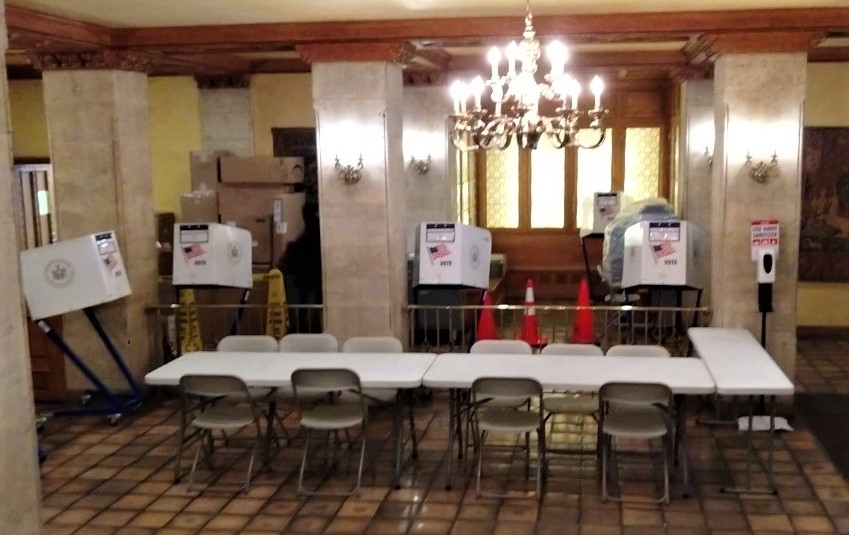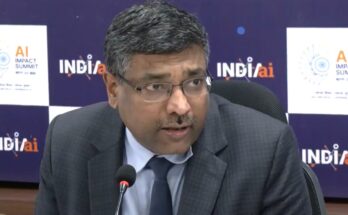By Arul Louis
New York, Under the clouds of the ongoing Covid-19 pandemic and uncertainty, US citizens will go to the polls on Tuesday to formally end the voting process for the 2020 presidential election, where about two-thirds of the registered voters have already cast their ballots and were now waiting for the results of the hard-fought contest, not only for the presidency but also for Congress.
President Donald Trump has defined the election as a war to “keep America Great”, while his Democratic opponent has called it a “battle for the soul of the nation”.
Biden goes into the election with a 6.7 per cent lead over Trump, slightly down from 7.5 per cent a week ago, according to the RealClear Politics polling average, which aggregates major poll results.
The House of Representatives, which the Democrats captured in 2018, will be theirs in this election, but the Senate where the Republicans have a slender majority of six could be at play with the party’s fortunes tied to Trump’s.
A Biden victory will make history by bringing an Indian-American, Kamala Harris, a heartbeat away from the presidency.
She would also be the first woman and the first person with a claim to African descent to become Vice President.
Indian-American voters, who make up about one per cent of the electorate, were courted heavily by both parties because they could make a difference in the swing states where the victory margins are very slim and a few thousand votes there could make a difference in the electoral college.
In an election process disrupted by the pandemic and the divisiveness it deepened, already an estimated 97.6 million of about 152 million registered voters had cast their ballots by Sunday, 62.1 million by post and 35.5 million at in-person early voting polling sites, according to the the US Elections Project.
Some states like California and New Jersey sent postal ballots to all their voters to avoid crowds at polling booths during the pandemic.
The results may not be known by Wednesday morning as it has happened with most polls because of the large number of postal ballots all of which may not be in by the close of polls and some states like Pennsylvania are allowing those arriving after polling day to be counted.
Because of the large numbers of citizens voting by mail or in early in-person voting spread over several days, the conventional exit polls of voters will not be possible this time.
Legally, states have till December 14 to turn in their results as on that day the electoral college of state representatives elected by voters will formally elect the President.
The uncertainty has put the nation on edge amid fears that incomplete results could lead to riots.
The National Guard has been put on standby in some states and major shopping areas in cities around the country boarded up stores in fear of riots giving the look of places hit by a storm.
The election has been turned by the Democrats into a referendum on Trump’s leadership during the coronavirus pandemic, which has claimed about 225 million lives.
After a slight ebb in the summer, the virus that originated in China has returned with a vengeance just before the election.
Trump, who is on the defensive on Covid-19, is running on the pledge to return America to the record levels of employment and economic growth before the pandemic smashed his achievement.
He is also making it a referendum on law and order after some of Biden’s supporters and others allied with them rampaged in many cities during protests against police and racism leading to a big increase in violent crime.
Trump and Biden, as well as Harris, spent Monday battling for ballots of those who hadn’t yet voted in the key states that could decide on who will be at the White House next year.
The popular votes do not matter in the US and the President is elected by an electoral college of members representing states and a majority there enabled Trump to wrest the presidency away from Hillary Clinton in 2016 even though he polled 2.87 million fewer votes than her.
Trump roared through five of the swing states, where neither party is entrenched and can go either way, Michigan, North Carolina, Wisconsin and Pennsylvania.
He said at a rally in Michigan: “I’m fighting for you. I’m fighting to survive. You have to survive.”
He added that he had had been under a illegal siege for three-and-a-half years, apparently referring to his impeachment, the constant barrage of criticism from the media and political opponents and that but for the horrible situation, “we’d have a very, very calm situation”.
His wife and First Lady Melania Trump, also campaigned in North Carolina, where she defended her husband’s record.
The Democrats brought out star-firepower in their last-minute campaign.
In Philadelphia, Harris, with rhythm and blues and soul music singer John Legend at her side, declared it “the most consequential of our lifetimes”, as she appealed to the socially-distanced voters to elect Biden, a leader of “toughness and empathy”.
Biden also campaigned in Pennsylvania, the state he was born in, and in Ohio, considered swing states.
Pop singer Lady Gaga was at a campaign stop with him and performed for an audience in Pittsburgh.
At a campaign stop in Cleveland, Biden said: “Tomorrow we can put an end to a presidency that has failed to protect this nation. And tomorrow we can put an end to a presidency that’s fanned the flames of hate all across this country.”
Biden was scheduled to campaign in Pennsylvania again on Tuesday while the polls are open and Harris in Michigan.
Trump has threatened to unleash lawyers to litigate various aspects of the election, including the extra time that some states have given for counting votes.
The large number of postal votes means that many of them can be individually contested over their authenticity leading to further delays.
When Democrat Al Gore ran against Republican George W. Bush in the 2000 election, their fate hung on the voting in Florida to determine their standings in the electoral college, although Gore had won more votes nationwide.
The two sides contested the votes individually, in many cases over how the ballots were perforated when the voters voted on the machines that were in use then.
The results were held up with court cases and appeals till Gore gave up on the eve of the December 14 deadline.




